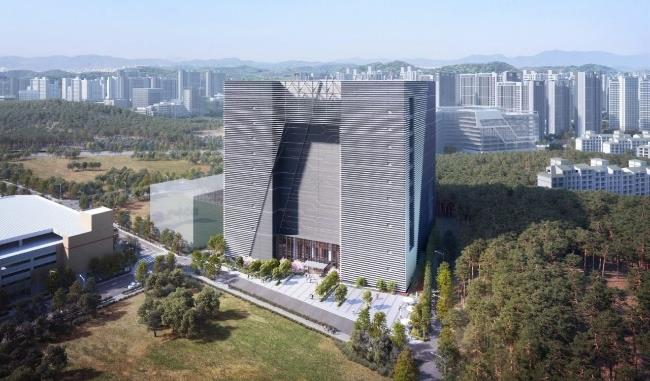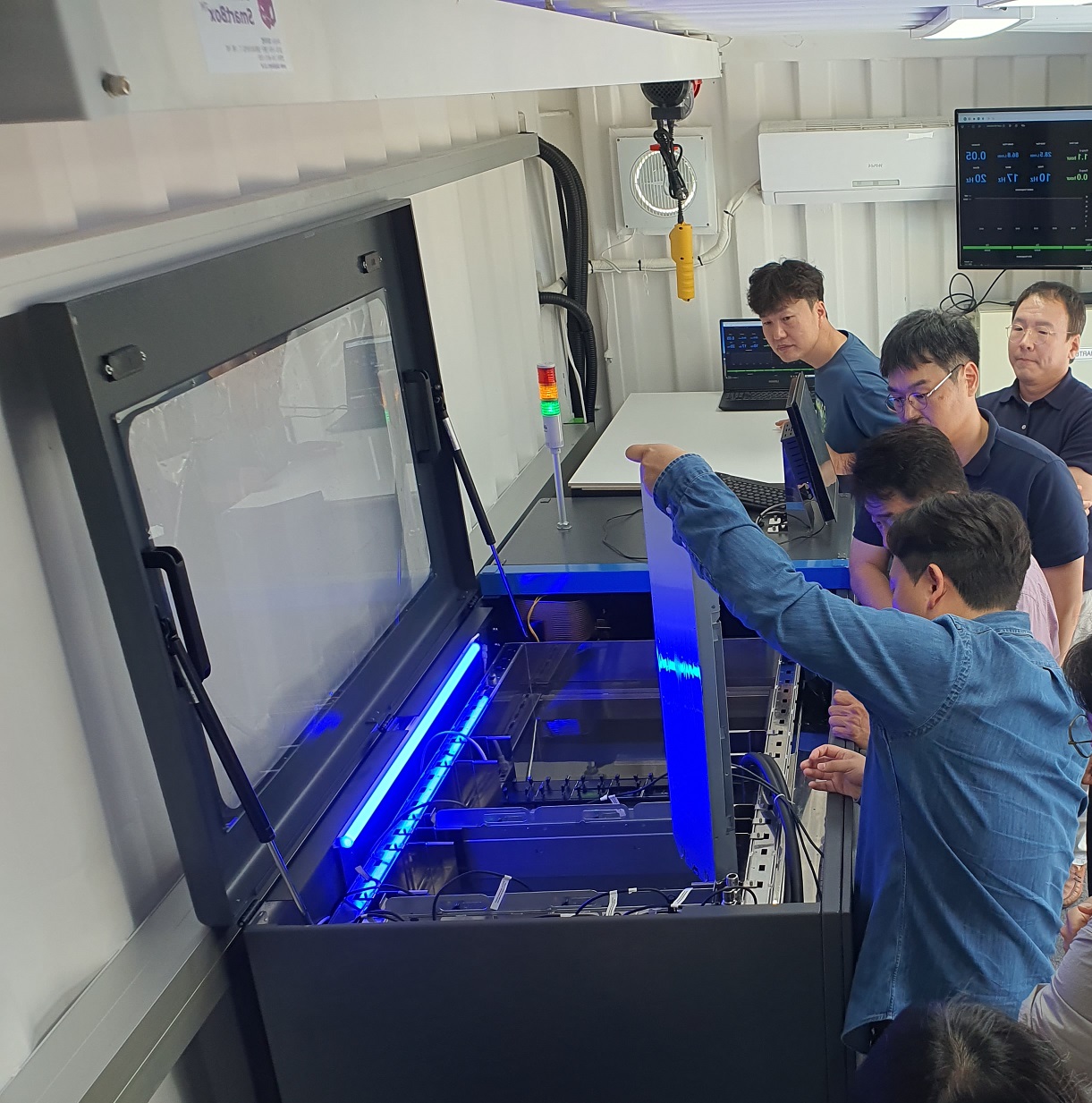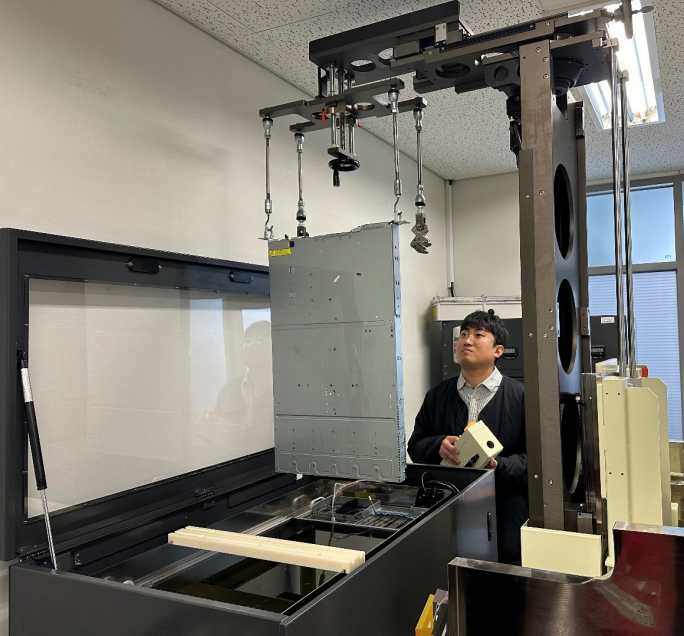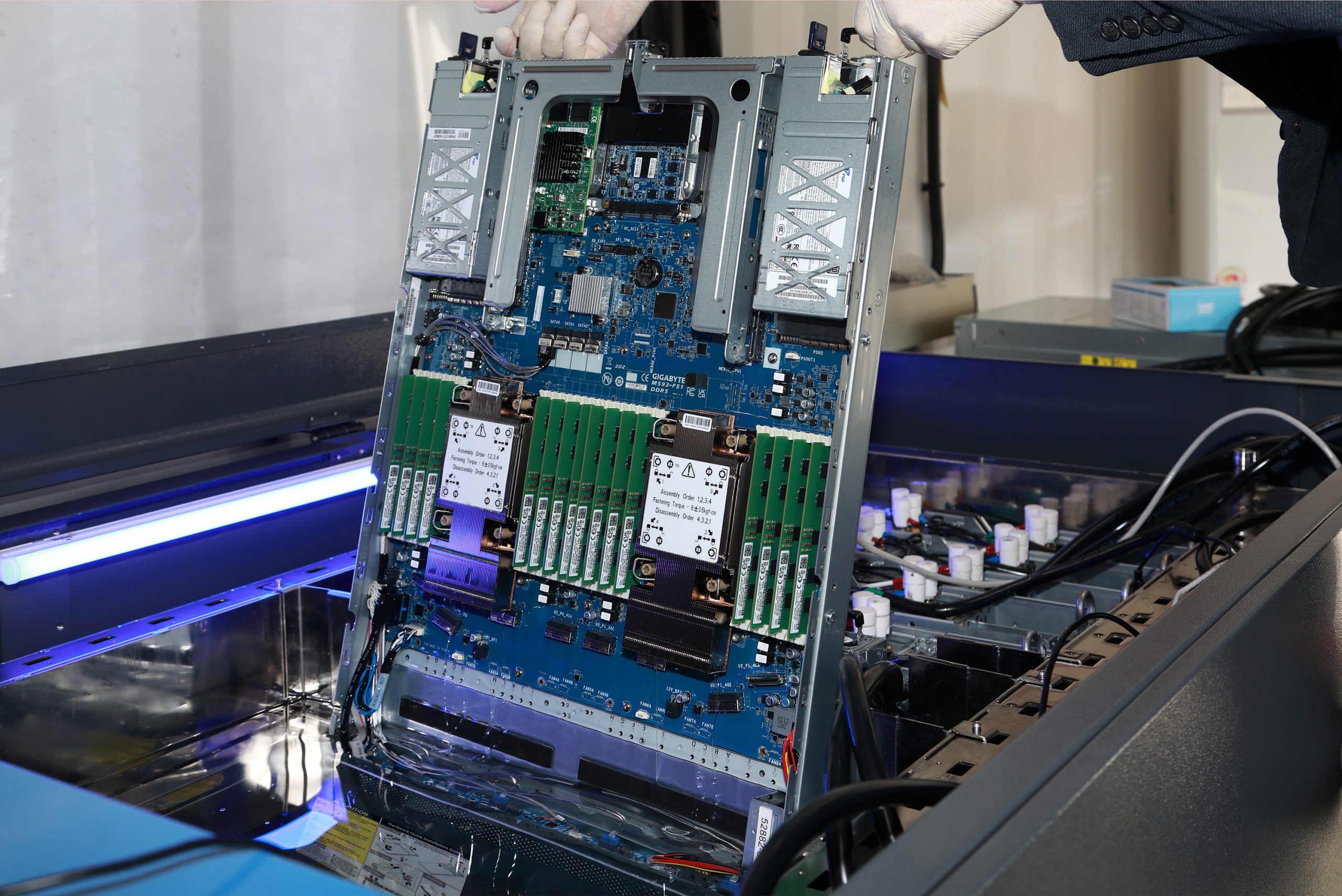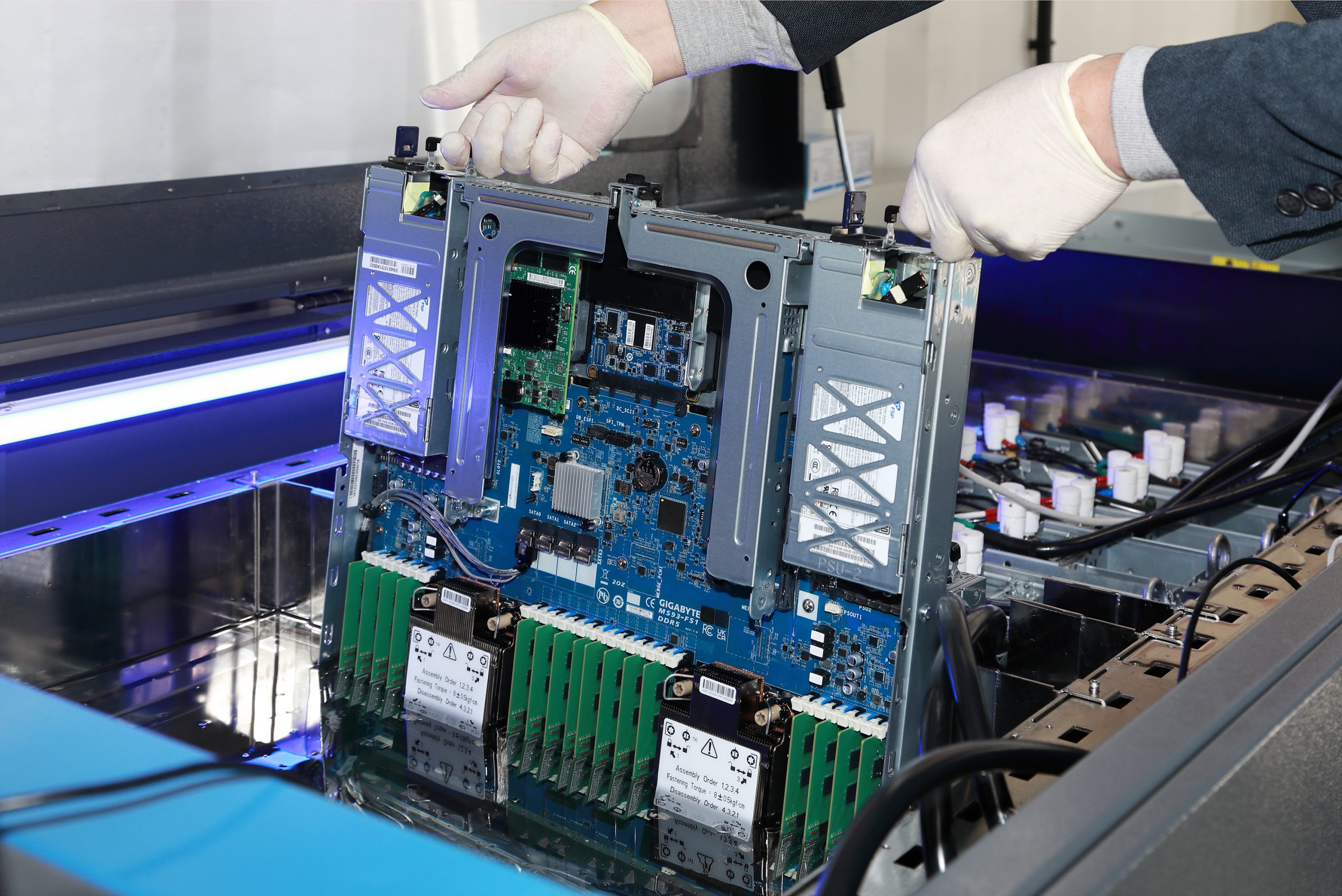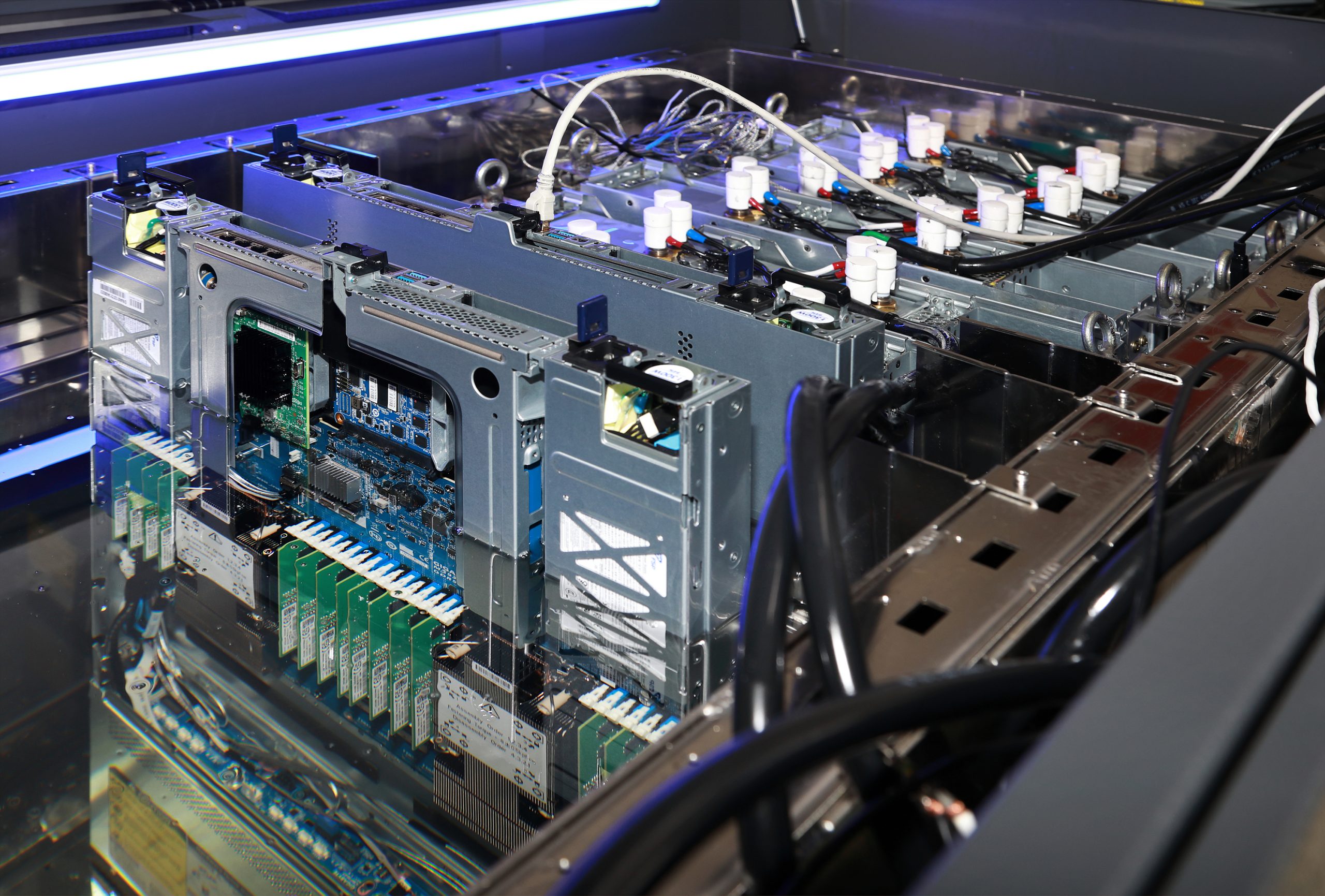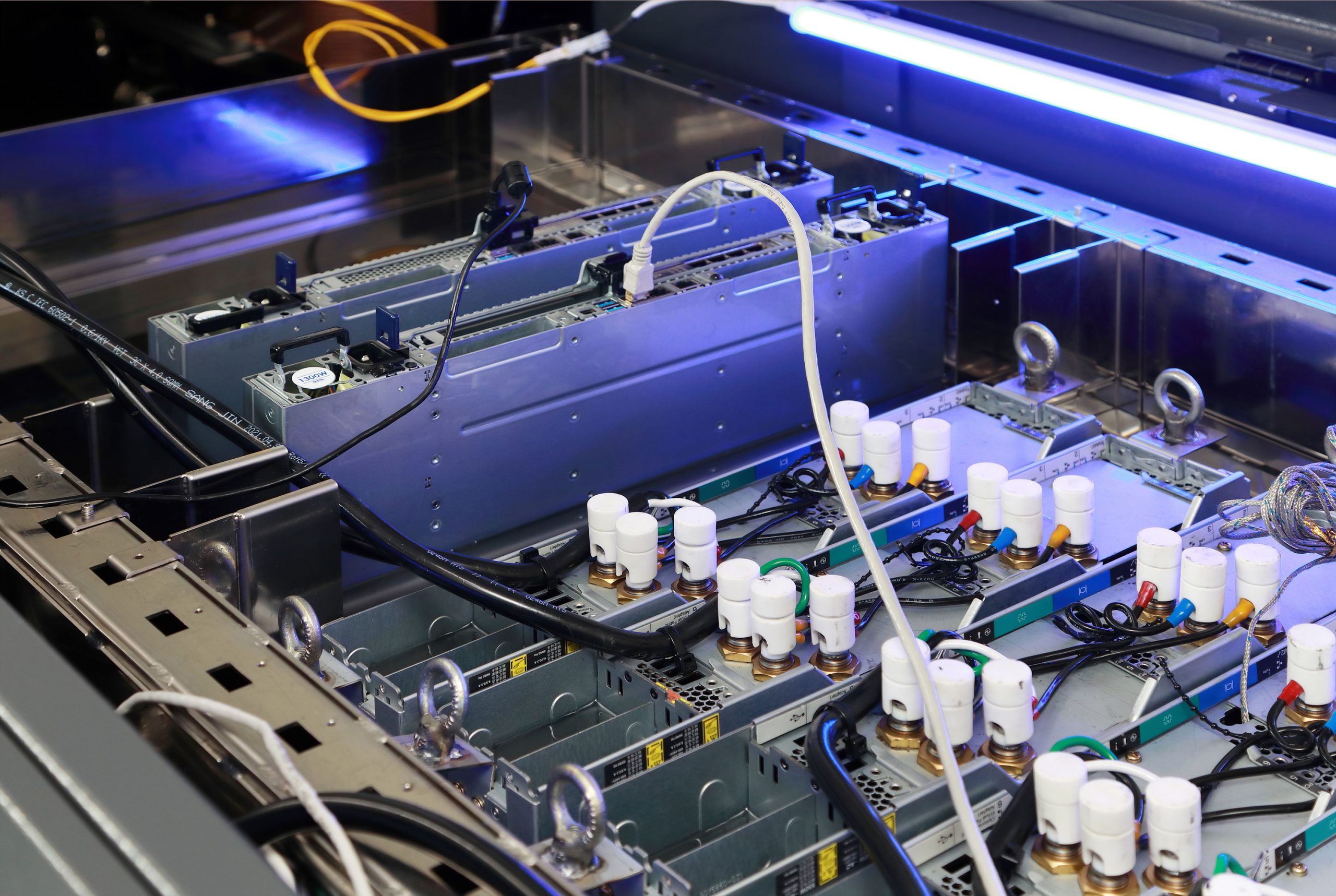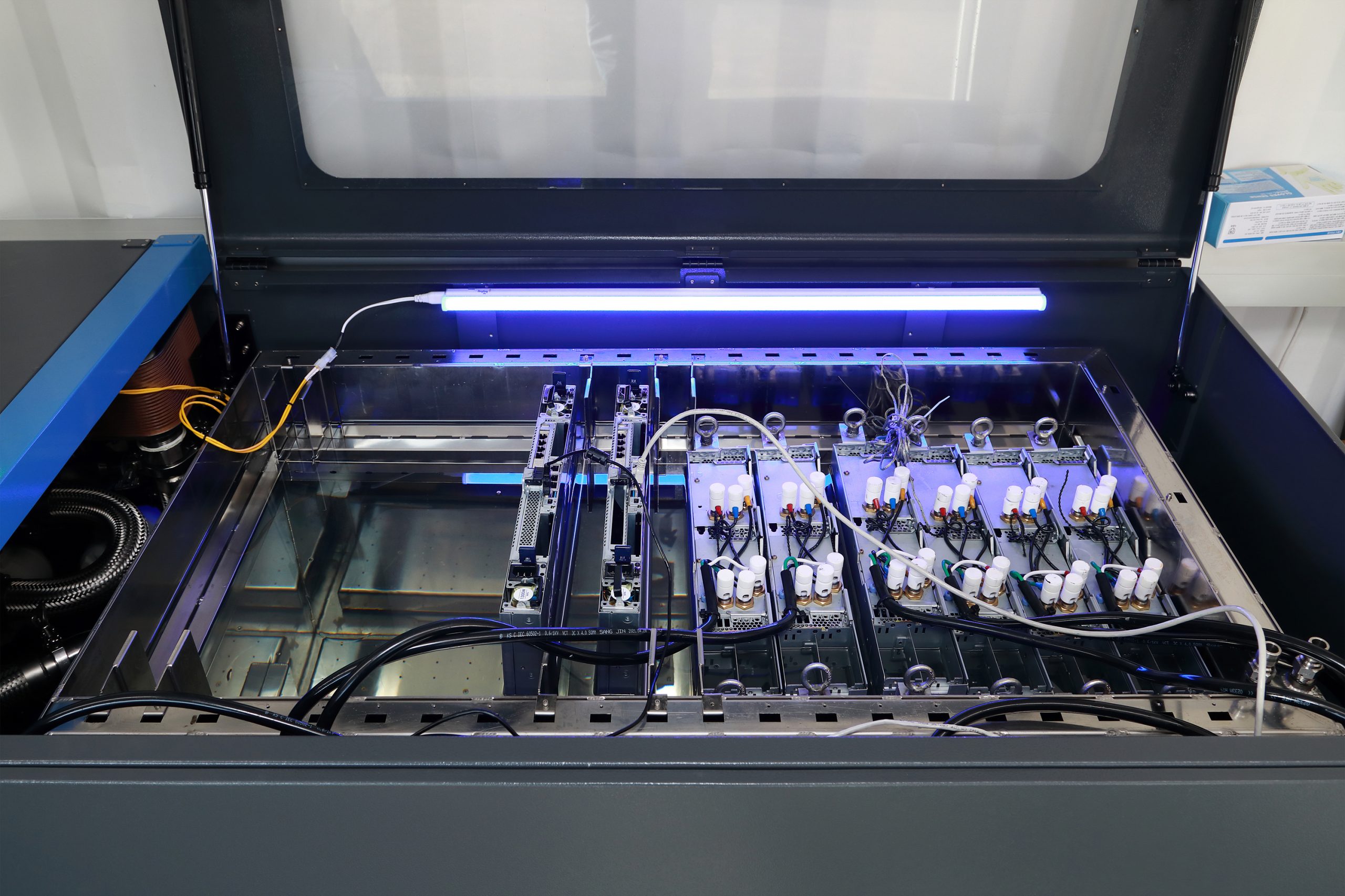Have you ever seen a computer immersed in liquid? The chips inside computers get very hot when operating, and need constant cooling to avoid becoming overheated. Traditionally, computers have been cooled through heat sinks that conduct heat away from chips and fans that move hot air out of the computer.
Now there is immersion cooling using special liquids, and Samsung C&T has developed its own proprietary method. Let’s find out more.
What are data centers and how are they cooled?
In the era of modern computing, one computer is not enough in terms of processing power or storage capacity. That is why business, schools, and individuals look to “the cloud.” The cloud refers to a virtual server that can be accessed through the internet, while a data center is a physical facility that stores multiple computing systems and related hardware equipment, enabling the provision of numerous servers simultaneously. In essence, a data center is the physical manifestation of the virtual cloud.
Data centers require computer servers stored in high density and powered by a lot of electricity, so a lot of heat is generated in a small, enclosed space. Therefore, data centers need to be temperature controlled, keeping the computer chips cool enough to allow for constant operation.
These days, with the rise of data usage, particularly due to the Internet of Things, artificial intelligence, high-performance computing, and so on, the need for purpose-built data centers is increasing. Because of the high energy usage, attention is shifting towards cooling technology that can improve data center energy efficiency.
The most common method of cooling is to use computer room air conditioners (CRACs). Here, warm air is blown off the chips and servers, sucked into an air conditioner unit to be cooled, and then pumped into a space beneath the server room floor. From there, fans blow the cold air upwards to cool the servers.
However, in recent years, methods have been discovered to use immersion cooling, where a server is immersed in a dielectric liquid, which is a fluid that does not conduct electricity. Immersion cooling systems are garnering significant attention in the global IT industry because of their efficient cooling effects.
Benefits of the immersion cooling method
The liquid immersion method offers numerous advantages over traditional cooling methods. First, it reduces electricity bills, as the hardware being immersed in cool liquid eliminates the need for large, expensive air pumps. This reduces total power consumption by about 30%, resulting in a reduction in carbon emissions. Additionally, capital investment and operating costs can be reduced by more than 20% compared to air-cooled systems. Secondly, direct contact between the liquid and the electronic equipment enhances cooling efficiency and effectiveness.
With growing interest in data center efficiency, immersion cooling technology is gaining traction as a next-gen thermal management solution for establishing better sustainable data center environments.
Development of Samsung C&T’s own next-generation data cooling system
Samsung C&T Engineering & Construction Group has developed its own proprietary cooling system in collaboration with a domestic cooling technology company. The new system developed by Samsung C&T is expected to expedite commercialization by securing results that comply with the global standard of the Open Compute Project, which shares information about data center products and best practices among IT companies worldwide.
In testing, it has been confirmed that this new method offers 80% energy savings compared to existing air-cooled power cooling, with a very high power efficiency index of 1.02 (the closer to 1, the more efficient a system is).
Above all, by securing this technology, Samsung C&T will be able to design a comprehensive data center from the ground up, encompassing the blueprint, construction, equipment supply, and core infrastructure, thereby dramatically improving a data center’s quality and stability. Additionally, it is expected to significantly reduce costs and construction periods. Moreover, the fact that Samsung C&T has independently developed crucial cooling technology for data center infrastructure through mutual cooperation with a specialist company is meaningful.
Introduction to Samsung C&T’s data center construction projects
Samsung C&T and its collaboration partner are applying for patents domestically and internationally so that they can embark on data center cooling projects worldwide using their new, independently developed technology.
At the end of last year, Samsung C&T completed four data centers, including the Hanam data center ordered by IGIS Asset Management, as well as data centers for Samsung Electronics and Samsung SDS. In this way, Samsung C&T is already engaged in data center construction, gaining valuable experience and expertise that, in combination with this new cooling technology, will help solidify its market leadership.
The company will continue to develop related technologies to increase the energy efficiency of data centers and reduce carbon emissions.


